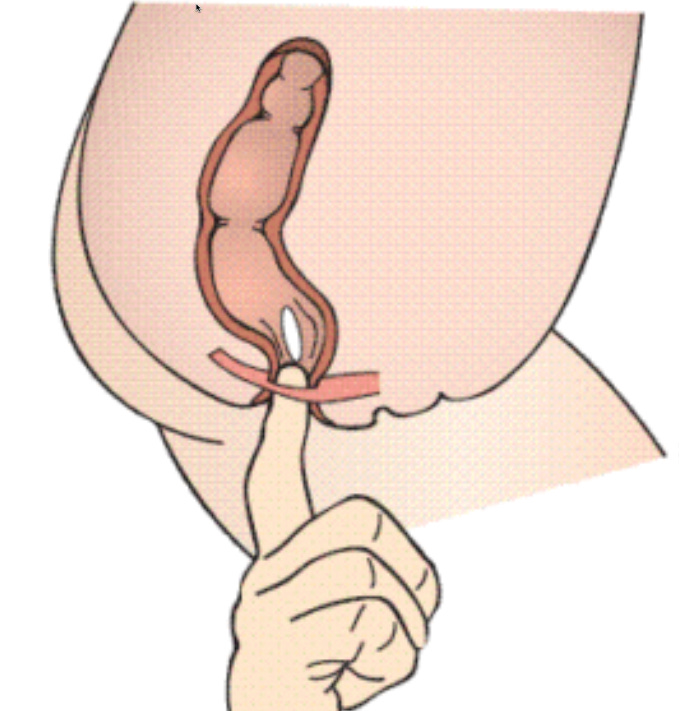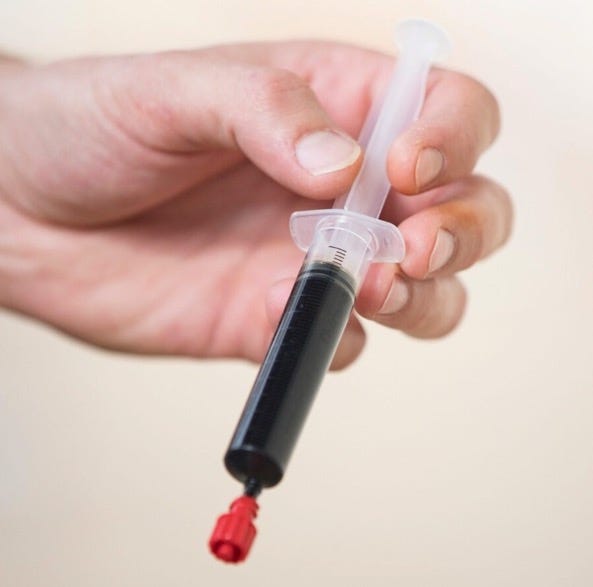If you've been working with me, you know that one of my family members had breast cancer. Thankfully, we got through that and resolved it pretty well.
I’ve done a lot of research—over 1,300 papers—and spoken with many scientists, doctors, and experts.
There are a lot of people promoting cancer remedies I'm not thrilled about. I’ll tell you what those are below.
It’s interesting to look at outcomes. How likely is it that cancer treatment is better than no treatment?
There’s surprisingly little evidence. People assume we’ve got cancer figured out, but that’s not always true.
Cancer treatments are not as good as they say they are
One Scandinavian study showed what happens with different approaches. Some people did nothing—“watchful waiting” or “active surveillance”—while others received radical treatment.
Increasingly, active surveillance is recommended. The difference in outcomes between aggressive treatment and no treatment is often small.
Aggressive treatments can severely impact quality of life. Hair loss, side effects, and exhaustion are common.
My sister had to get dialysis before she passed away. She was exhausted for two days after each session, then had to go back.
It wasn’t a good way to live.
In this other study, some men were assigned to radical prostatectomy. Others were observed.
Over nearly 11 years, 137 men who had surgery died. In the watchful waiting group, 156 died.
So, 19 more people died in the watchful waiting group.
They randomly assigned people to each group. After 12 years, 12% of the surgery group died of prostate cancer, and 18% of the waiting group died.
That’s a 6% difference. Not huge.
They like to focus on death from prostate cancer, but what about other causes of death?
Treatment side effects can lead to inactivity, which may cause death from other issues.
Men whose tumors had grown outside the prostate capsule had a 14-times higher risk of prostate cancer death. That sounds dramatic, but the absolute numbers are still small.
Remember: only 19 more people died in the non-treatment group, out of 700.
If I were one of those 19, I’d want the treatment. But aggressive treatment is rough, and may not be worth it.
I prefer to look at all-cause mortality. Did the treatment reduce overall death rates?
I found the full study. Let’s see if it includes that.
It does. But after 12 years, the difference in all-cause mortality was no longer significant.
They prefer not to track all-cause mortality because it doesn’t favor their treatments.
They note that differences in cancer death didn’t increase much after 7–9 years. All-cause mortality reduction disappeared after 12 years.
So maybe it helped short term, but not long term.
Overall mortality charts show minimal difference between surgery and watchful waiting.
In some cases, watchful waiting even had better results. But overall, it tracked closely.
That’s the key point. They highlight cancer-specific death, but I care about overall survival.
When you zoom out, the numbers are too close to justify the pain of aggressive treatment for most.
So, personally, I wouldn’t run to get a radical prostatectomy. But of course, consult your doctor.
Next, I’ll tell you what I would do instead.
If you look at studies on breast and skin cancer—the most common types—you see similar patterns.
One study compared women with ductal carcinoma in situ. Some were treated immediately, while others waited.
Those who delayed treatment for a year or two had similar outcomes to those who got aggressive treatment right away.
They always try to rush you into treatment. Radiation, chemo, hormone therapy—it's all lined up fast.
But the waiting didn’t hurt outcomes, as long as they eventually got treatment.
No treatment at all did increase mortality. But delayed treatment didn’t.
That study included older women, mostly over 74, from a long-term Medicare database.
The groups weren’t perfectly matched, but the trends were clear.
Another study found that aggressive treatment didn’t improve survival over 20 years.
Women who had lumpectomy, radiation, or mastectomy had a 3.3% death rate from breast cancer—similar across treatments.
Again, this was ductal carcinoma in situ—the lowest-risk form. But it challenges the idea that more aggressive is always better.
It’s hard to study people with aggressive cancers who choose no treatment. But often they feel better longer.
So many horror stories today - an example
Someone I know had bladder cancer.
They wanted to remove his bladder, but he refused.
Instead, they scraped it and used a tuberculosis toxin. Then he got endocarditis, needed open-heart surgery, lost his spleen.
His life has been miserable. Did he die from cancer or treatment? Hard to say.
So what I’ll tell you now is what I would personally do if I had cancer. Not medical advice—just my own view.
There’s a lot of anecdotal evidence for high-dose THC helping cancer. Not many studies, but many personal accounts.
Doctors say there's no evidence, but no one funds the studies. So, of course, there's no evidence.
Most studies use low-dose THC or synthetic versions, which aren’t the same.
THC has been studied for nausea and pain in chemo, but not much for shrinking tumors.
In one study, patients given over 4.7 mg/day lived longer than those who didn’t get THC.
Higher doses—20, 100, 500, even 1,000 mg—have only been explored by individuals.
Rick Simpson’s Cancer Breakthrough
The most famous case is Rick Simpson. He used THC oil on skin cancer, and claims it cleared up in days.
He recommends making it at home from cannabis flower soaked in alcohol.
There are no official studies, but there are case reports. One child given cannabis extract had reduced cancer but died from other complications.
My friend Corey Yelland also used cannabis. She had anal cancer and was told radiation would destroy her body.
She refused treatment and used large doses of cannabis oil. She recovered and lived many more years.
She eventually died of sepsis, not cancer. She had many health issues, but not cancer.
I’d say it’s fair her cancer was cured with cannabis.
Rick Simpson Oil (RSO) is a whole-plant cannabis extract. You soak the flower in alcohol, then evaporate it.
Full Extract Cannabis Oil
What’s left is a black, tar-like substance—full extract cannabis oil (FECO).
You can make it yourself or buy it. One site sells 60 grams for $1,800—about $30/gram.
You mix the extract with cocoa butter and pour it into 2 ml cylindrical gummy molds.
Use about 400 mg of THC per gummy. Take one suppository three times a day for a month.
Start with half a dose to adjust. The goal is one gram per day in divided doses.
After 30 days, taper to a maintenance dose of 300–350 mg daily.
Rectal administration bypasses the liver and avoids getting high. It uses the lymphatic system.
You don’t insert it deeply—just enough so it stays in place.
Use a glove or applicator, and dispose of it. Cocoa butter melts quickly, so handle with care.
Make sure your extract contains multiple cannabis strains and terpenes. The full extract is important.
This method delivers cannabinoids into the interstitial fluid that surrounds your cells.
That's how it spreads systemically without a psychoactive effect.
The cost is around $1,000 for the first month, then about $350/month for maintenance.
But there’s a cheaper way. You can make it yourself using THCA extracts.
A cheap way to get THC that can fix cancer
Heat THCA gently in the oven to convert it into THC. It will bubble as CO2 is released.
You can buy THCA resin or butter legally in many places under the 2018 Farm Bill.
Some companies sell it for $9/gram or less during sales.
With this method, the cost drops to $5/gram or less. It just takes some work and connections.
You might need to explore online forums or Telegram groups, but it's doable.
For example, Vivimu is one legitimate seller. They offer resin that converts easily with heat.
At half price, you can get a month’s supply for $250–$300. Maintenance costs are $100–$125/month.
I've seen this work quickly. Some report visible tumor shrinkage in days.
Skin cancers often disappear when treated directly with the oil.
One man had a large lesion on his nose. He applied the oil, and it vanished without scarring.
His doctor later found no evidence of disease.
Monitor the tumors as they hopefully disappear
You need a way to monitor progress—like weekly ultrasounds.
Ask your doctor if it’s okay to wait 30 days. Most say sooner is better, but the data doesn’t always support that.
If it works, your doctor can confirm you're disease-free. That’s the goal.
I'm not against doctors. You should talk to yours, monitor things, and keep options open.
Cannabis Health Radio has hundreds of stories of people recovering this way. It’s free, honest, and inspiring.
Some used cannabis after trying everything else. Others skipped conventional treatments altogether.
Will it work for everyone? No.
But based on everything I’ve seen, it works for many.
I’d guess it helps 4 out of 5 people. One in five may not respond.
That’s just my view, based on personal research and what others have shared.
Personally, I wouldn’t chase ivermectin or fenbendazole treatments. I've looked into them. Results are spotty. Not really good.
And they may temporarily shrink tumors — but THC will make the tumor disappear usually.
Remember: A lot of the people pushing those are just selling something.
I don’t sell anything. I’m only sharing what I would do.
Here’s my suppository video.
Making Suppositories
What strain to use?
You could try different strains, you can use different things over the years. You're gonna be on this the rest of your life.
I like to VARY the strain and not worry about using the same one. That way, the person’s body won’t adjust too much to one particular strain.
Remember, you only need to have one gram a day for the first 30 days.
Links
Risk of Breast Cancer Death is Low After DCIS Diagnosis - NCI
Rick Simpson Oil (RSO): Guide to RSO
Cannabis Health Radio Podcast — Cannabis Health Radio








Share this post